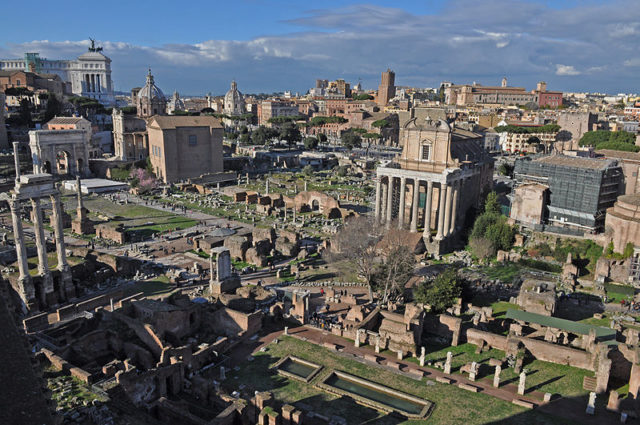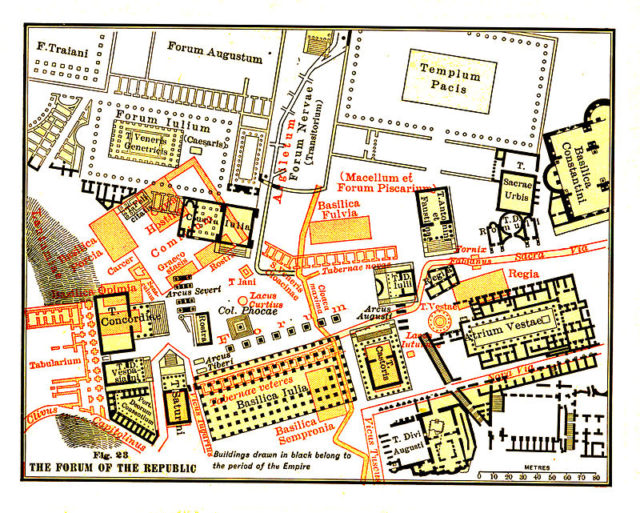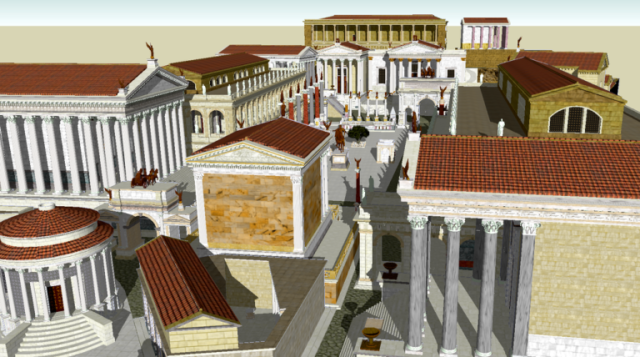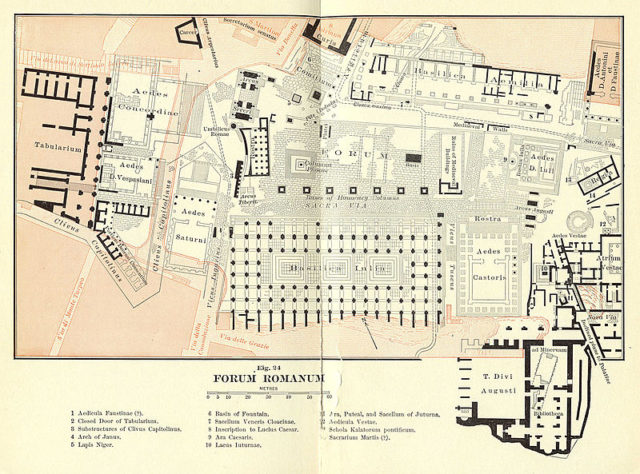By 500 AD, the population in Rome had dropped significantly, going from 750,000 to 250,000 in only 50 years. Over time, the buildings of the Forum were dismantled, even though some efforts were made to keep them intact. By the 6th century, some of the remaining buildings in the Forum were being converted into Christian churches.
One last column was added to the Forum in 606 AD, a Roman monumental column dedicated to the Emperor Phocas. In 665 AD, the Emperor Constans II ordered the lead roofs of Roman buildings to be stripped off, and this exposed areas to weather damage, fast-forwarding the deterioration of the monumental buildings. The spaces in the ruins were soon filled with more Christian churches.

Over the centuries, structures that remained in the Forum were razed and used to build feudal towers and castles in the area. By the 13th century, the towers and castles were torn down, and the area had become a dumping ground so vast it caused the ground level to rise from the debris.
It wasn’t until the time of Pope Urban V in 1367 that interest increased in ancient monuments. There could have been two reasons for this — one was the sociological aspect of their representation of the rise and fall of great civilizations, and the other was their handiness in providing building materials for the increased construction being carried out in the city.


In the 15th century, the ruins drew many artists from afar to sketch the ruins and copy inscriptions; eventually, a hesitant excavation began in the 18th century. Then the Arch of Septimius Severus was cleared by Carlo Fea in 1803, after which archaeologists under the regime of Napoleon started to clear the debris from the Forum. It took until the early 20th century for the site to be fully excavated, and further excavations in new areas are continuing today. The ruins afford archaeologists a range of eras to study, due to the Roman habit of building on top of earlier ruins.
The Forum area has long been a tourist destination, so foot traffic is allowed along restored ancient Roman streets. The small museum at the Colosseum at the end of the Via dei Fori Imperiali displays collections of sculpture and architectural fragments found during the excavations. It also houses reconstructions of the Forum and nearby Fora; they offer videos to help visitors understand what they are seeing.

The Roman Forum is considered one of the biggest sources of inspiration for artists in the area.
Other Fora still exist in the area, such as the Forum Iulium, the Forum Holitorium (commerce of herbs and vegetables), the Forum Piscarium (commerce of fish), and much more that cover other produce such as wine, cattle, and pork.
